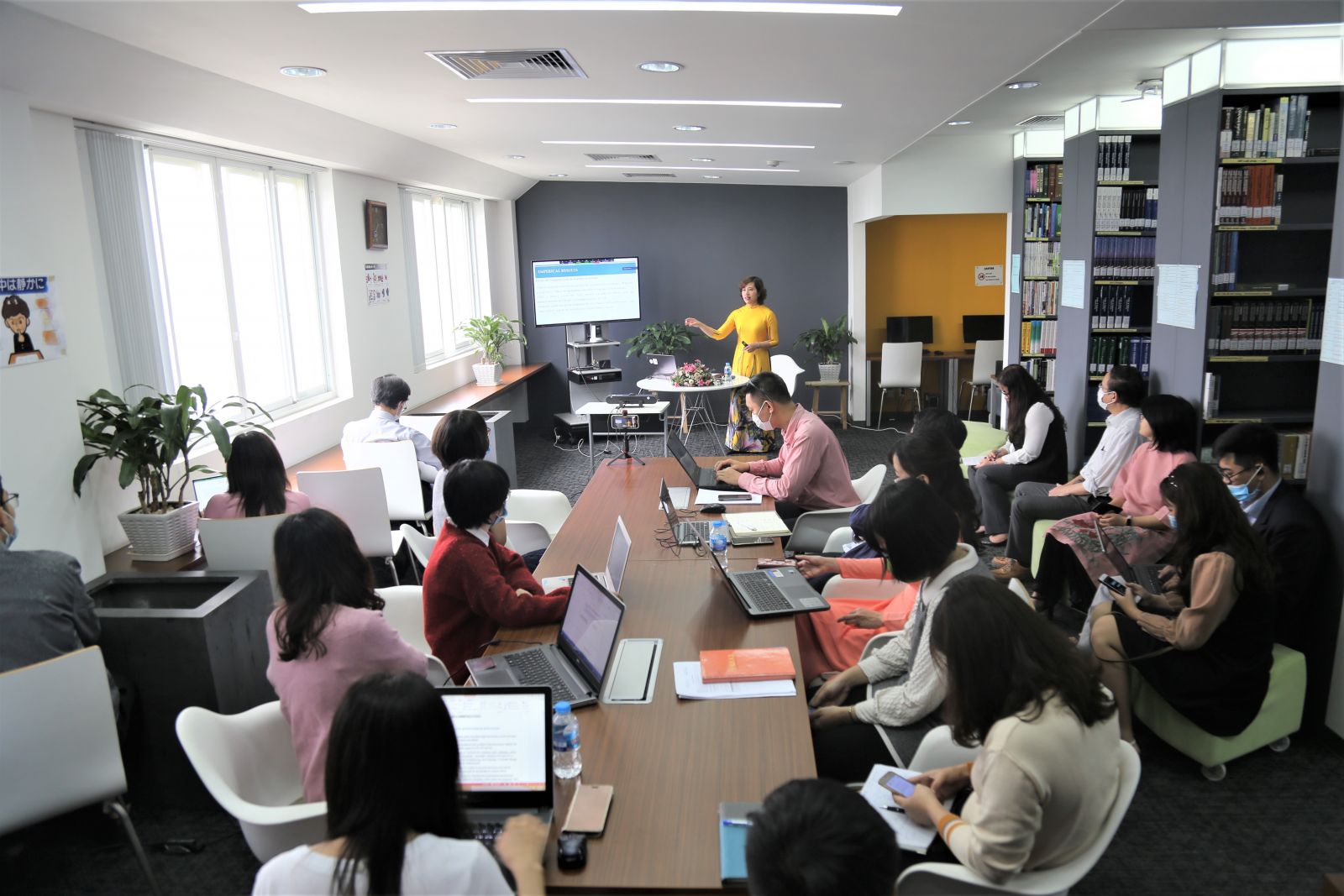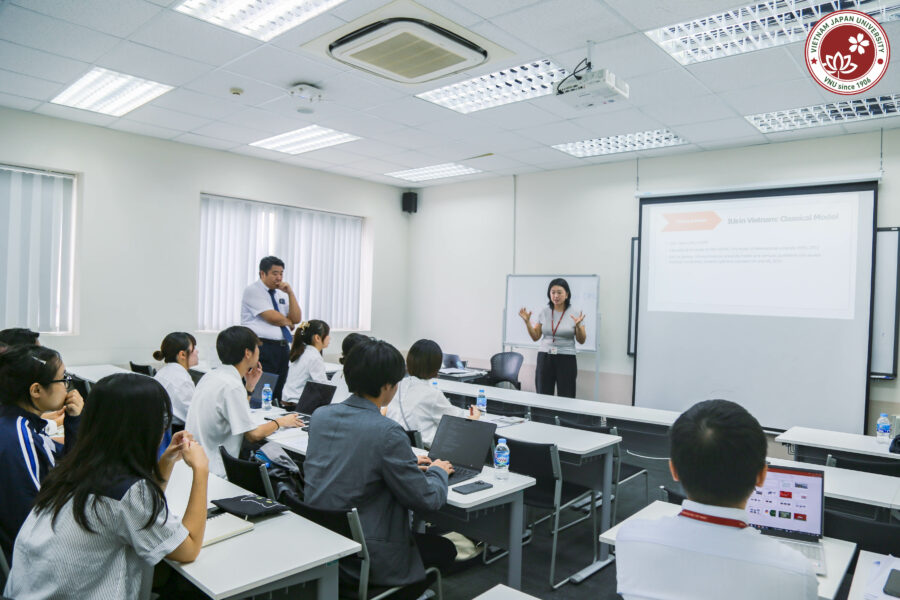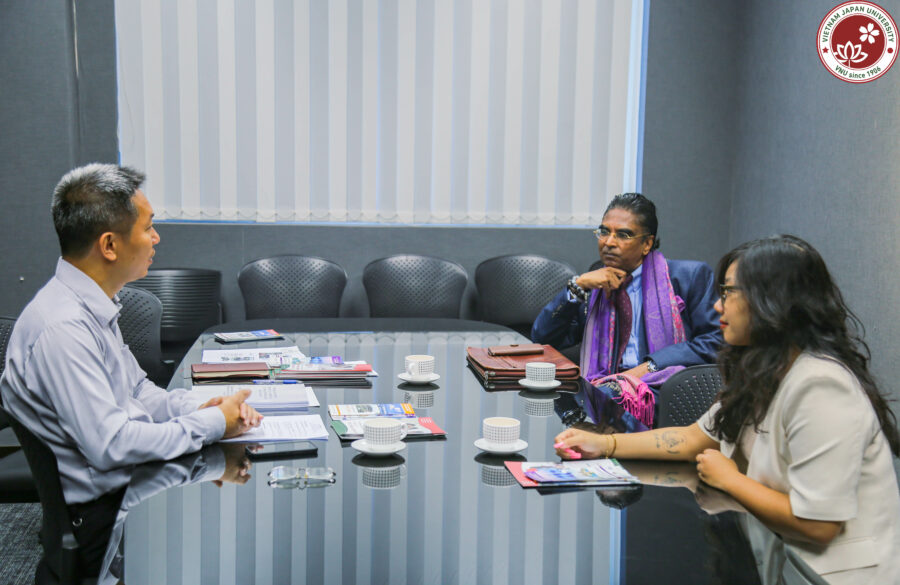 On March 8th 2021, Prof.Dr. Tran Thi Thanh Tu – Vice Rector made a seminar about “Green bank development in Viet Nam”. The seminar focused on the following issues:
On March 8th 2021, Prof.Dr. Tran Thi Thanh Tu – Vice Rector made a seminar about “Green bank development in Viet Nam”. The seminar focused on the following issues:
– Rational
– Overview of green finance and green bank
– Overview of green bank in vietnam
– Determinants of green bank development in Vietnam
– Suggestions and policy recommendations
In order to offer audience a background on the issue, the speaker made a general introduction about green bank, green growth.
Accordingly, in a broad concept: Green Bank is Sustainable Bank ”(Imeson M., and Sim A., 2010). In a narrow concept: Green Bank refers to its operational activities that encourage environmental activities and reduce carbon emissions, such as stimulating the use of green products and services; applying environmental standards for approval of loans or providing preferential credits for projects reducing CO2. (UN ESCAP, 2012). In summary, A bank is considered “green” when it meets both conditions: (i) to provide green services in short term, and (ii) to have long-term business strategy satisfying environmental criteria and social responsibility.
 Green Bank Development in Viet Nam
Green Bank Development in Viet Nam
According to a State Bank Vietnam’s Survey, 19/35 banks developed strategies for environmental and social risk management; 13/35 banks Integrated the content of environmental and social risk management in the process of green credit assessment; 10/35 banks Built credit products and banking services for green sectors and shown interest in providing credit, mainly in the medium and long term with preferential interest rates for green projects.
When we refer to Green bank Model by Kaeufer (2010), Viet Nam is now at level 3 “Systematic business activities” among 5 levels. It needs more efforts to upgrade to level 4 “Initiative of strategic ecosystem” and level 5 “Initiatives of proactive ecosystem”.
Industry 4.0 Revolution is going fast, that forces banking system to more efficiently operate. “Greening” operations is a global trend, so Viet Nam needs to be subtle to changes and more adaptive to catch up with the trend.
Some questions were raised: So what benefits does green banking bring to all parties (the State, enterprises and people)? The above questions were discussed and explained by the speaker at the talk. Accordingly, “green banking development” will generate a sustainable economy when technology is applied in transactions and management to reduce emissions into the environment; resources and human resources for banks are efficiently used and saving in time and cost for bank users.
 Some suggestions and policy recommendations have been addressed at the talk as follows:
Some suggestions and policy recommendations have been addressed at the talk as follows:
– Government, State Bank of Vietnam, Ministry of Finance: Develop strategies, action plans, and policies to promote green bank development and green investment
– Applying Bottom-up model: support from the Gov – leading investors
– Pilot green investment banking model then replicate model
– Put priority economic sectors for piloting, then replicating model
– Banks actively build development strategies for green banks
– Banks actively develop green portfolios to diversify risks and anticipate green investment needs of businesses
– Banks actively improve staff’s qualifications in approving, appraising and selecting green investment projects for green credit.
– Communication about green growth and green credit, green investment for sustainable development:
+ Information about green credit to business sectors should be specific and clear
+ Information about priority sectors of green investment as well as specific action plans should be widely and clearly communicated to businesses and community
+ Raising awareness of business managers about green investment/green growth by short-term, and long-term training programs with Universities
+ Universities, Institutes improve research and training on green growth and sustainable science
+ Educating consumers on green consumption toward sustainable development




